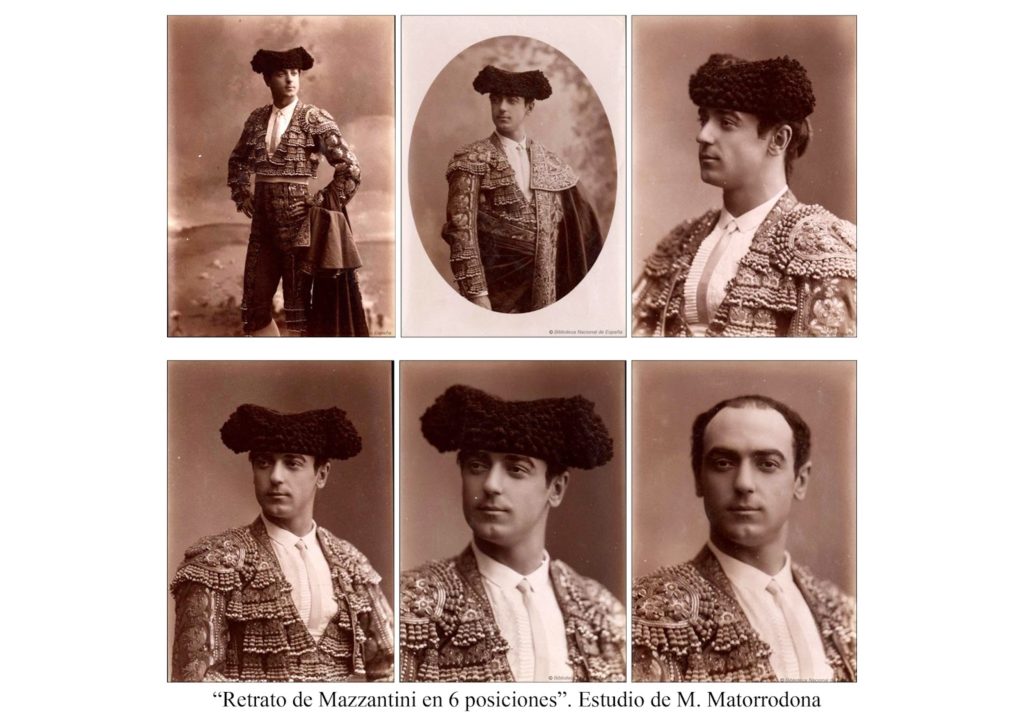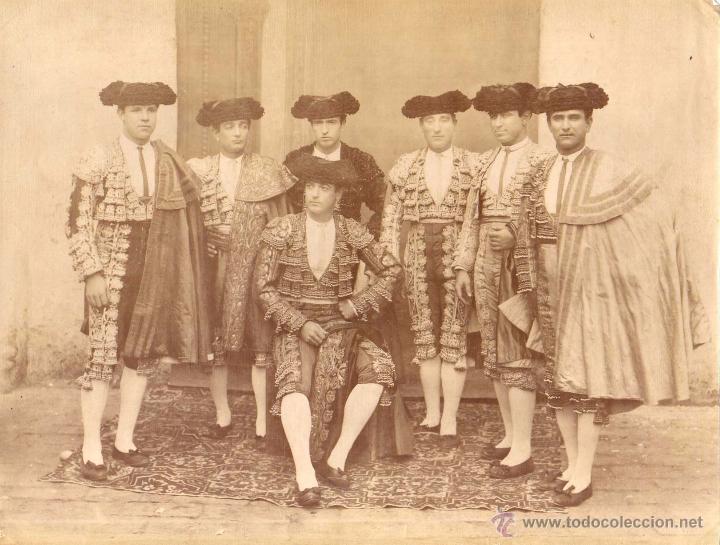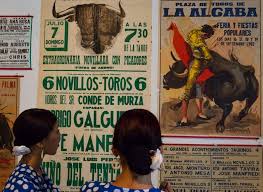“BETTER, NOR EVEN MAZZANTINI EL TORERO”, THE STORY: MOST USED CUBAN PHRASES. PHOTOS
There are phrases that have been in the memory of Cubans for several generations and one of them, the most popular is: “That does not Mazzantini the bullfighter” or “Better, or Mazzantini the bullfighter.”
But is it perhaps a character born of popular imagination? Well no, friends: the above had very real existence.
And the habanerísima intersection of Infanta and Carlos III, saw him in some of his best moments. The history of bullfighting in our country was long. They began in the 1500s, just like cockfighting and hoop racing. During the colonial times, with ups and downs, there were bullfights in the Campo de Marte -now Parque de la Fraternidad-, in the ultramarine village of Regla, in Belascoaín street and in other places in Havana.
The last important square was located on the corner of Infanta and Carlos III, until the first American intervention, at the end of the ancestor century, banned bullfighting.
And there displayed his courage and his grace the ‘mataor’ Mazzantini.
Luis Mazzantini and Eguía, Vasco, was born in Elgoibar, Guipúzcoa, in 1856. In Bilbao, Marseille and Naples he received a careful education. He mastered French and Italian and his assiduity in reading gave him a solid cultural background. He went to the ring for the first time on April 13, 1884, in Seville, where he would show his bravery and elegance, which later also went to appreciate the Havana corner of Infanta and Carlos III.
His cold courage and the good-looking demeanor that characterized him made the bullfighter literally throw himself in his pocket to the public of this very illustrious San Cristóbal de La Habana.
The face of Mazzantini starred in the most striking bullfight posters published in Havana, some colored by hand.
The bullfighter also promoted the introduction of the basket tip (Jai alai) in Havana, one of the most popular forms of Basque pelota.
But the triumphs of Mazzantini in Cuba were not limited to these hauls in addition to the bullfighting arena, but here he also won in the love affairs. For a long time it was the custom, both of artistic companies and of individual figures, what they called “making America”. Those tours were a test of fire for showbiz people.
In 1887 – coincidentally with Mazzantini – there was La Divina, Sarah Bernhardt, the French queen of the stage. Daughter of a courtesan, born in Paris in 1844, Sarah had renounced her original name of Rosine. He conquered the heart of the public the same in his hometown as in London or New York.
According to the tradition, some of her performances did not receive from the Havana public the applause that she demanded, occasion in which she would have coined the phrase that qualifies us as “Indians with a frock coat”.
Between the French actress and the mataor -two years younger than her- in this very square arose that volcanic charm that from the time of the ancients propitiates the mischievous Cupid, and that had as a battlefield the Hotel Inglaterra in the middle of Havana.
Not to doubt, Mazzantini liked the habaneros, both for his performance in the bullfighting arena and for his love affair with Bernhardt. What is more: the people were deeply moved by their gesture, by paying for the vault of their banderillero, who died here.
Mazzantini left the bulls in 1905, to devote himself to politics. He was elected councilor of Madrid and, later, civil governor of Guadalajara and Ávila. He died on April 23, 1926, in Madrid.
And it was reflected in popular speech, because after a century and a quarter you can still hear that of “Mejor, ni Mazzantini el torero”.
“MEJOR, NI MAZZANTINI EL TORERO”: FRASES CUBANAS MÁS USADAS. PHOTOS.
Hay frases que han quedado en la memoria de los cubanos por varias generaciones y una de ellas, de las mas populares es: “Eso no lo hace ni Mazzantini el torero” o “Mejor, ni Mazzantini el torero”.
Pero, ¿se trata acaso de un personaje fruto de la imaginación popular? Pues no, amigos: el susodicho tuvo muy real existencia.
Y la habanerísima esquina intersección de Infanta y Carlos III, lo vio en algunos de sus mejores momentos. Fue larga la historia de las corridas de toros en nuestro país. Comenzaron en los años 1500, igual que las peleas de gallos y las carreras de argollas. Durante los tiempos coloniales, con altibajos, hubo plazas de toros en el Campo de Marte —hoy Parque de la Fraternidad—, en la ultramarina villa de Regla, en la calle Belascoaín y en otros sitios habaneros.
La última plaza importante estuvo situada en la esquina de Infanta y Carlos III, hasta que la primera intervención norteamericana, a finales de siglo antepasado, prohibió la fiesta taurina.
Y allí exhibió su coraje y su garbo el ‘mataor’ Mazzantini.
Luis Mazzantini y Eguía, Vasco, nació en Elgoibar, Guipúzcoa, cuando transcurría 1856. En Bilbao, Marsella y Nápoles recibió una esmerada educación. Dominaba el francés y el italiano y su asiduidad a la lectura le proporcionó una sólida formación cultural. Salió al ruedo por vez primera el 13 de abril de 1884, en Sevilla, donde ya exhibiría su bravura y su elegancia, las que tiempo después también iba a apreciar la esquina habanera de Infanta y Carlos III.
Su frío valor y el porte de buen mozo que lo caracterizaron, hicieron que el torero se echara literalmente en el bolsillo al público de esta muy ilustre San Cristóbal de La Habana.
El rostro de Mazzantini protagonizó los carteles taurinos más llamativos publicados en La Habana, algunos coloreados a mano.
El torero impulsó también la introducción de la cesta punta (Jai alai) en La Habana, una de las modalidades más populares de la pelota vasca.
Pero los triunfos de Mazzantini en Cuba no se limitaron a estos lances además de la arena taurina, sino que aquí venció también en las lides amatorias. Durante mucho tiempo fue costumbre, tanto de compañías artísticas como de figuras individuales, lo que llamaban “hacer la América”. Aquellas giras eran una prueba de fuego para la gente del mundo del espectáculo.
En 1887 —coincidentemente con Mazzantini— se encontraba aquí La Divina, Sarah Bernhardt, la reina francesa del escenario. Hija de una cortesana, nacida en París en 1844, Sarah había renunciado a su nombre original de Rosine. Conquistó el corazón del público lo mismo en su ciudad natal que en Londres o Nueva York.
Según la tradición, alguna de sus actuaciones no recibió del público habanero el aplauso que ella exigía, ocasión en la cual habría acuñado la frase que nos califica como “indios con levita”.
Entre la actriz francesa y el mataor —doce años menor que ella— en esta mismísima plaza surgió ese volcánico encanto que desde la época de los antiguos propicia el travieso Cupido, y que tuvo por campo de batalla al Hotel Inglaterra en plena Habana.
A no dudar, Mazzantini gustó a los habaneros, tanto por su desempeño en el ruedo taurino como por su aventura amorosa con la Bernhardt. Lo que es más: a la gente la emocionó profundamente su gesto desprendido, al costear la bóveda de su banderillero, quien aquí murió.
Mazzantini abandonó los toros en 1905, para dedicarse a la política. Fue elegido concejal de Madrid y, posteriormente, gobernador civil de Guadalajara y Ávila. Murió el 23 de abril de 1926, en Madrid.
Y quedó plasmado en el habla popular, pues al cabo de un siglo y cuarto todavía se escucha aquello de “Mejor, ni Mazzantini el torero”.
Agencies/CubaAhora/Internet Photos/Excerpts/ Arnoldo Varona/ TheCubanHistory.com
THE CUBAN HISTORY, HOLLYWOOD.










